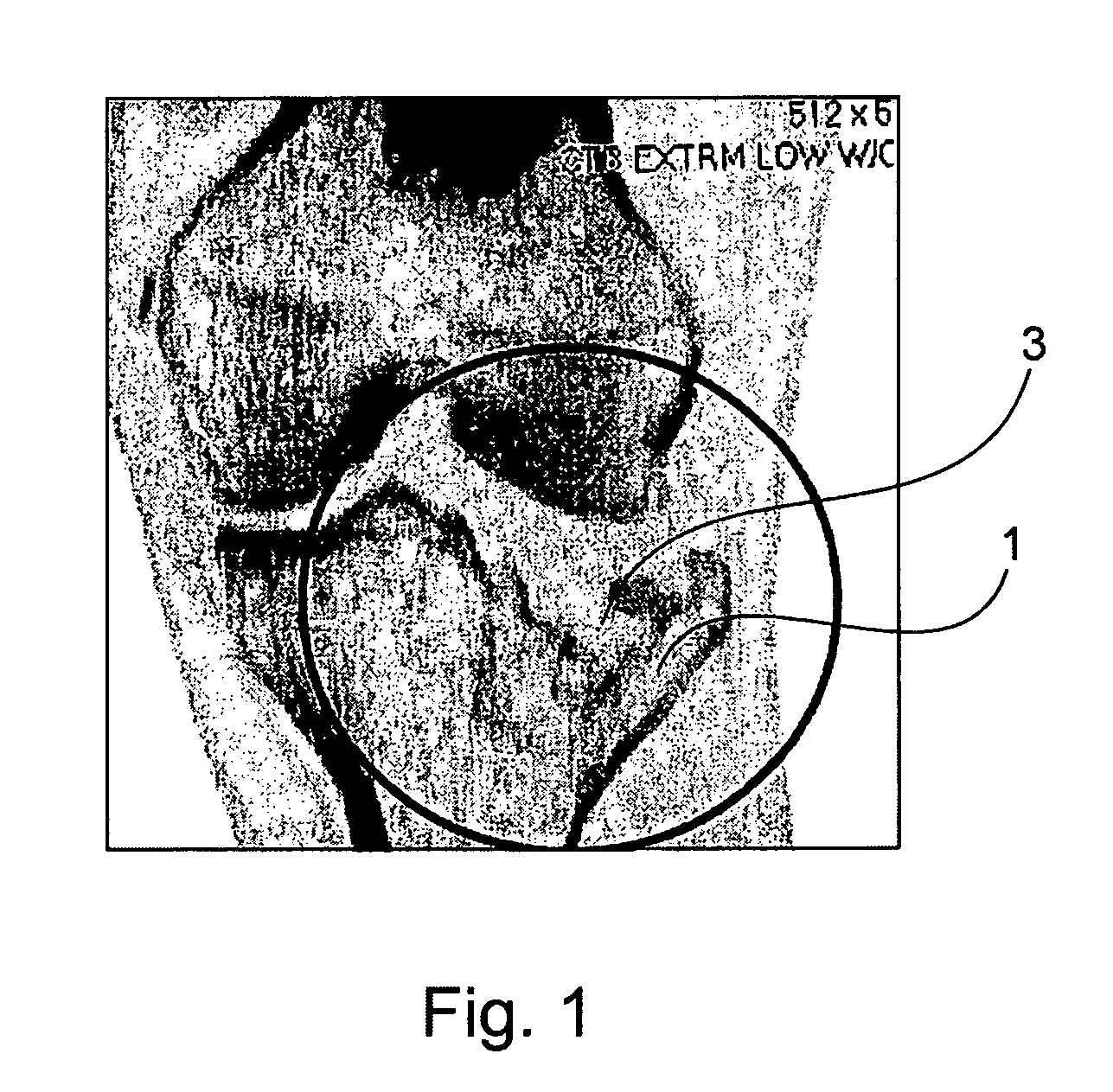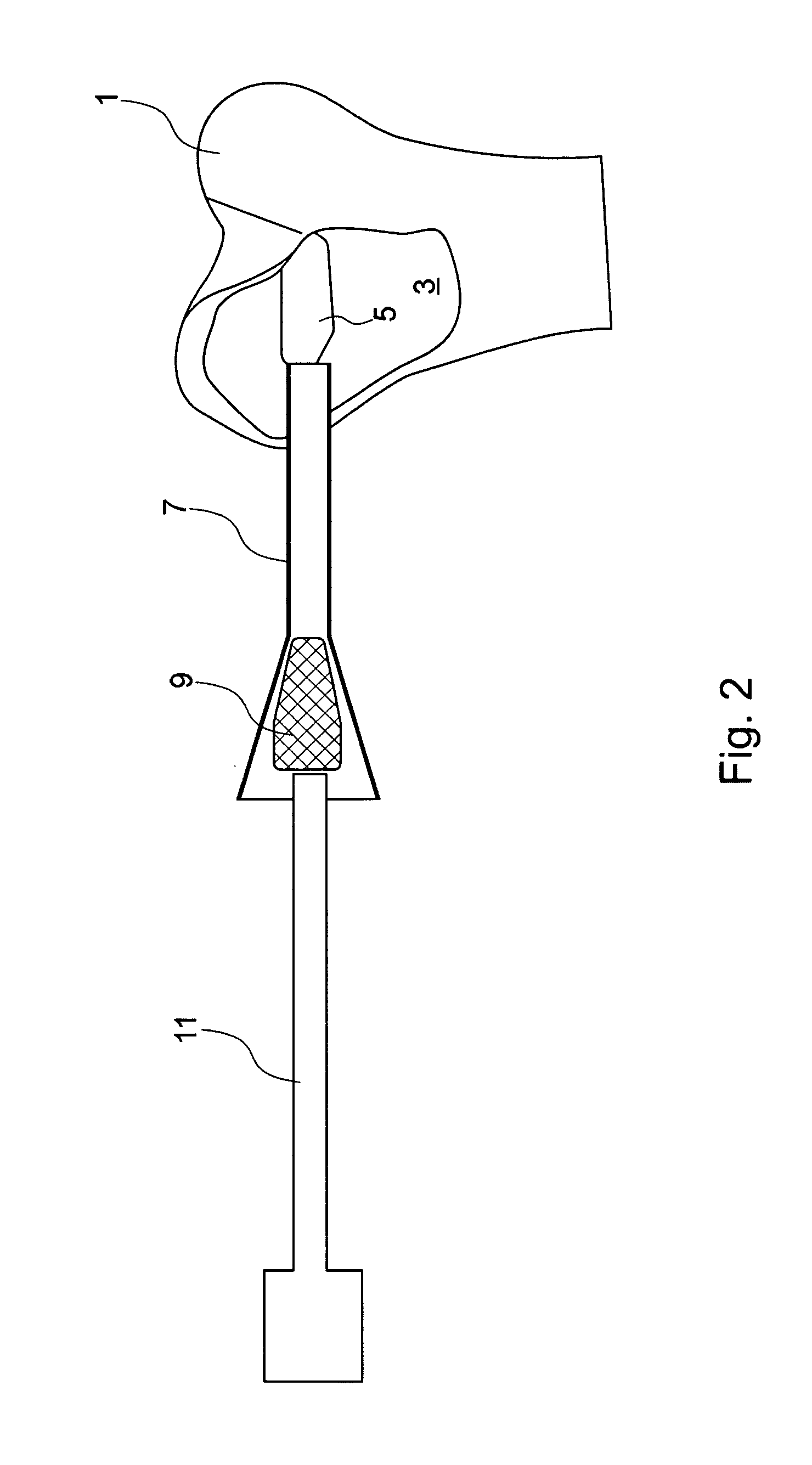Synthetic bone substitute, method for preparing same and method for filing a cavity in a substrate
a technology of synthetic bone and substrate, applied in the field of synthetic bone substitute, can solve the problems of increasing the cross-section of the cavity, further weakening the already damaged bone, and irregular cavity to be filled, so as to prevent rejection reactions, reduce rejection reactions, and increase the stability of the connection
- Summary
- Abstract
- Description
- Claims
- Application Information
AI Technical Summary
Benefits of technology
Problems solved by technology
Method used
Image
Examples
example 1
[0038]A cylinder of porous material comprising by volume 95% PLA and 5% TCP with an interconnected porosity of 5-85% volume fraction was exposed to N-Methyl-2-Pyrolidone plasticizer for 8 minutes. It was then compressed using hand pressure (less than 15 N) from 13.5 mm to 6.0 mm. It was then exposed under no external pressure to water at 37° C. and recovered to 9 mm after 10 minutes. After one hour it had recovered its original mechanical properties.
example 2
[0039]A block of porous material comprising by volume 50% PLA and 50% CaP with interconnected porosity of 5-85% was provided. This material produced using 3-D printing of alternating layers of a CaP and a bio-degradable polymer. It was then compressed using hand pressure (less than 150 N). The external applied force was then removed and the material was allowed to recover to its original dimensions properties.
[0040]FIG. 1 shows an X-ray image of a bone 1 with a cavity 3 due to a fracture.
[0041]In FIG. 2, the bone 1 is represented schematically with its cavity 3. The cavity 3 has an opening hole 5 the cross-section of which is substantially smaller than the cross-section of the cavity 3. A funnel 7 can be introduced into the cavity 3 via the opening 5. A porous synthetic bone substitute substrate 9 that has been previously softened by dipping it into a liquid plasticizer such that the plasticizer is partly absorbed in the porous foam structure of the bone substitute is introduced int...
PUM
| Property | Measurement | Unit |
|---|---|---|
| porosity | aaaaa | aaaaa |
| porosity | aaaaa | aaaaa |
| volume | aaaaa | aaaaa |
Abstract
Description
Claims
Application Information
 Login to View More
Login to View More - R&D
- Intellectual Property
- Life Sciences
- Materials
- Tech Scout
- Unparalleled Data Quality
- Higher Quality Content
- 60% Fewer Hallucinations
Browse by: Latest US Patents, China's latest patents, Technical Efficacy Thesaurus, Application Domain, Technology Topic, Popular Technical Reports.
© 2025 PatSnap. All rights reserved.Legal|Privacy policy|Modern Slavery Act Transparency Statement|Sitemap|About US| Contact US: help@patsnap.com



